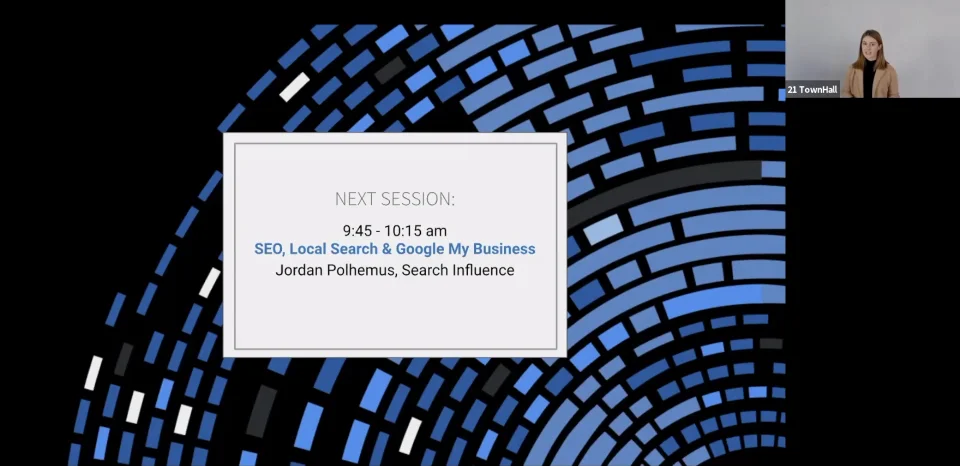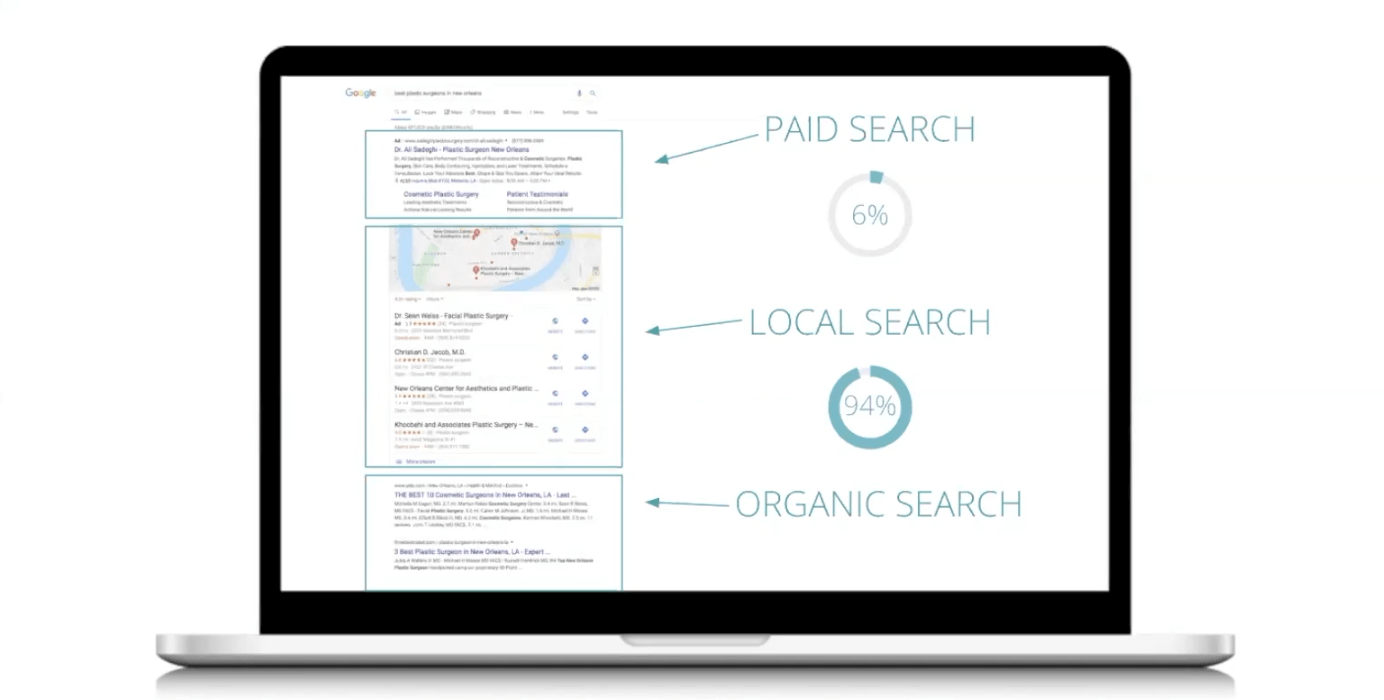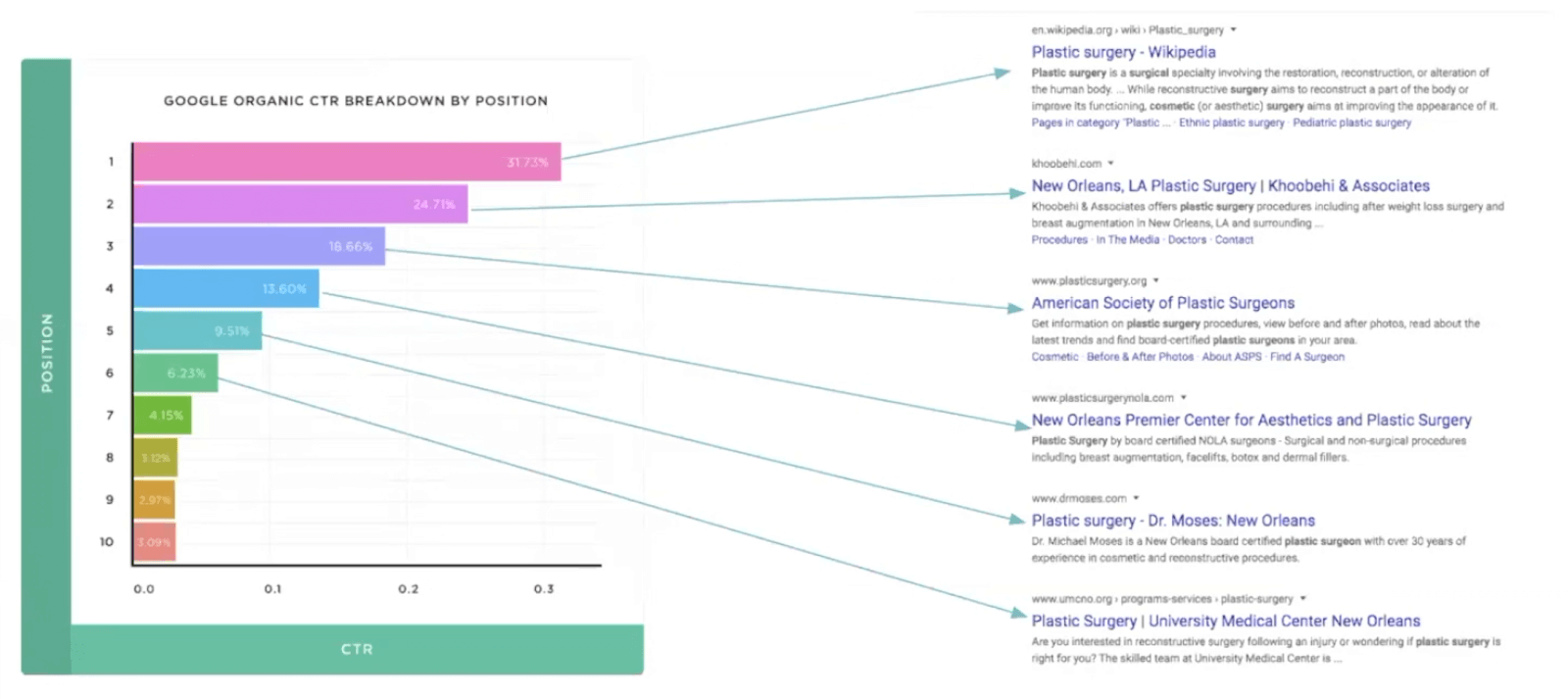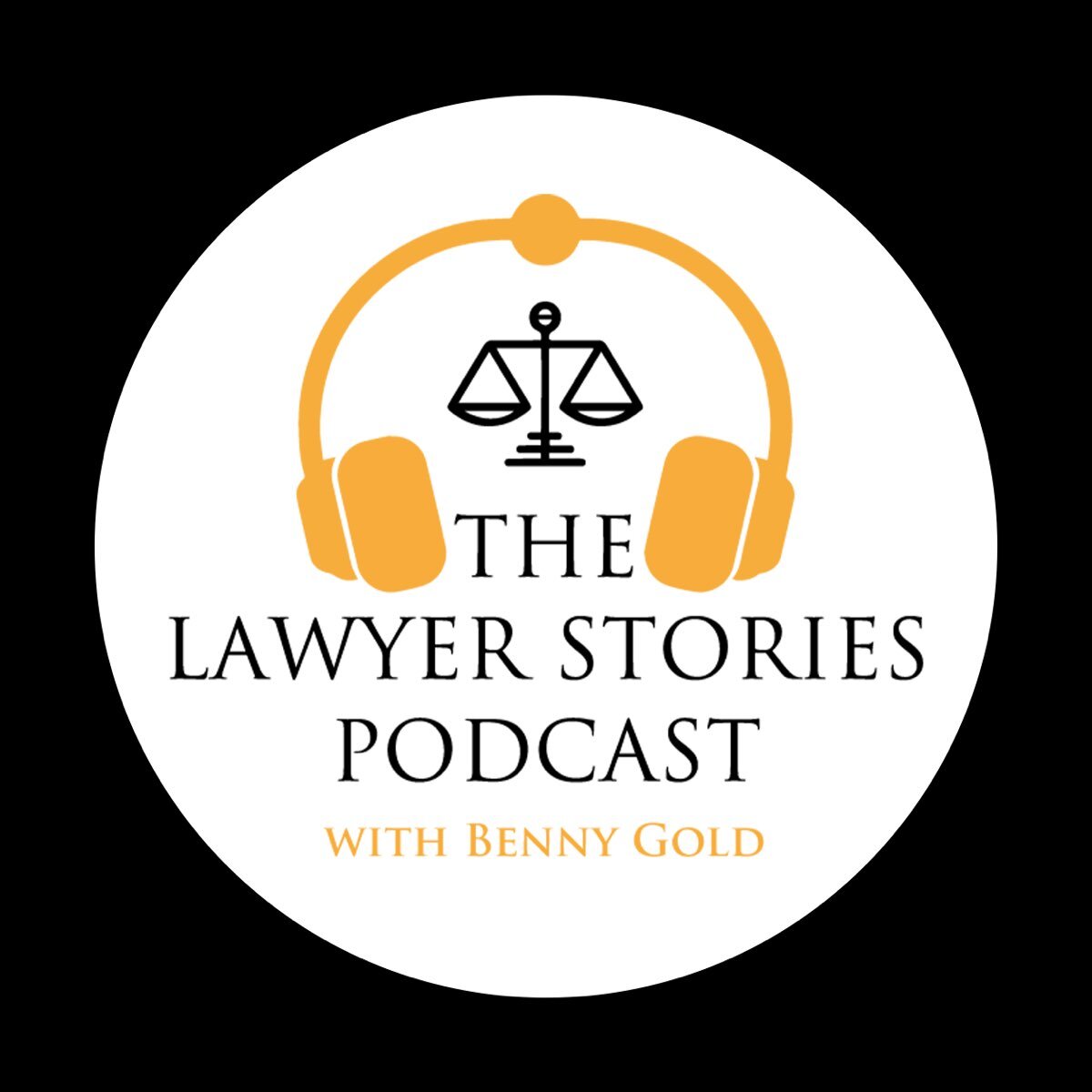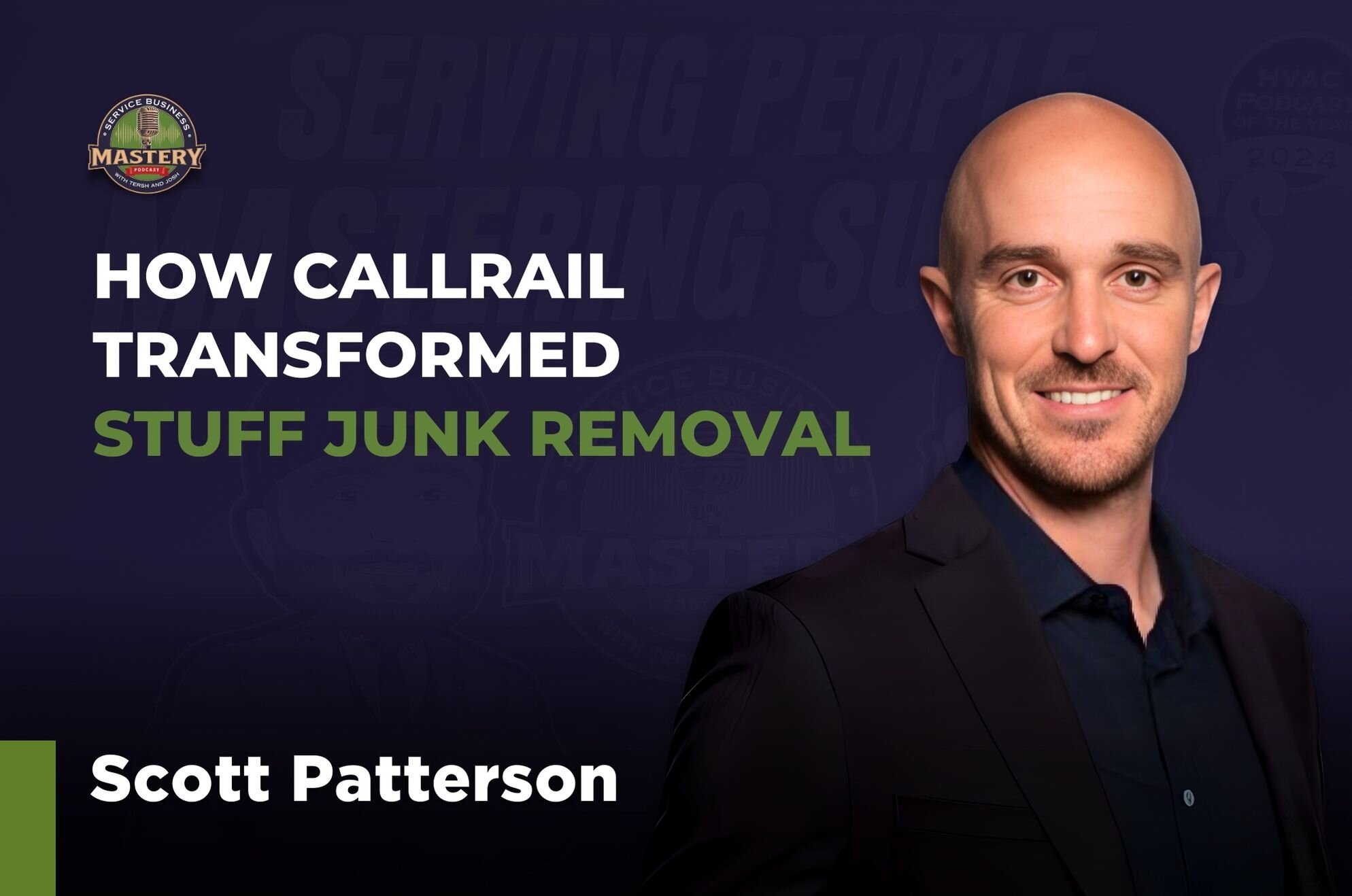Digital Marketing Boot Camp, Session 2: Jordan Polhemus of Search Influence shares the importance of SEO, local search and how to get found.
SESSION TRANSCRIPTION
Introduction
I’m Jordan Polhemus and I’ll be talking today about SEO, local search, and Google My Business. I’ve been a marketer since 2013, and I’ve been focusing on large marquee accounts in the tourism and medical industries, and I have a special affinity for strategy development and highly technical projects in terms of marketing. I also oversee about $1.8 million in annual marketing investments each year.
I work for Search Influence which has headquarters in New Orleans. Search Influence is a nationally recognized full-service marketing agency and consulting agency out of New Orleans. We have about 45 full-time employees, and we apply to most of the major industries, with specialty interest in education, medical, and tourism industries. Some of what we do is obvious as marketing goes, but not as obvious is how we use data to help our clients better understand businesses and how to grow their business.
Session Agenda:
- What SEO is & why it’s important
- Establishing appropriate business goals
- Translating goals into strategy
- Putting it all together
SEO: What it is and why you need it
To orient ourselves a little bit to what we’re talking about, the search engine results page is typically organized with paid search at the top, what we call local search or the local pack in the middle, and organic search at the bottom, depending on the search that that person’s doing. In 2019, a study came out that said about 94% of all clicks went to the local or organic search results, and then 6% to the paid search results.
That most certainly does not mean that businesses should not invest in paid search. Quite the contrary, depending on business goals and industry, you can get more immediate results through paid search. And it’s vitally important for growing many businesses. And you will learn a lot more about that later, but what we’ll be talking about today is that local search and organic search pack, and the sheer volume that local search and organic search gets.
The importance of SEO
Why is SEO important? Other than the huge amount of traffic that goes to all local results and the organic results, a website’s position in the search engine results page can be critical because the higher up the page that a website is, the more clicks that that website will typically get. CTR, which stands for click-through rate, is the number of clicks that a website receives divided by the number of times a website is shown on the search engine results page.
Search Influence
Websites with higher ranking in the search engine results page get more clicks than lower ones. Most people nowadays understand that. But this is a good thing to orient ourselves to when we’re talking about SEO, and to remember the impact this can have on your business and how ranking still is as important as ever.
After position 10, the click-through rate takes a dramatic nosedive because the vast majority of search engine users just don’t go past the first page of Google anymore, which leads us to this old marketing adage that “the best place to hide a dead body is on page two of Google Search.” And that’s a testament to how good Google is with serving up the results that a user was looking for.
The purpose of Google
Now that we have a better base understanding of Google and the results we’ll be talking about—not paid, but organic and local results needed to answer what SEO is—we must first understand the purpose of Google. This might not be something a lot of businesses are used to thinking about. Like most businesses, Google is a for-profit company. If you think about it in that way, you wonder, “Okay, well, if Google is a for-profit company, how do they make money?”
Well, the vast majority of Google’s profits come from selling advertising space to other businesses. That profit equates to about $120 billion in 2019, just 70% of their total $171 billion approximate in revenue in 2019. There're many types of ads they sell, but the primary revenue driver is paid search ads.
Paid search ads are the ones you see at the top of the Google search engine results page, and paid search ads are the ones you might click on above the organic results. And when somebody clicks on those ads, the business running that ad is charged a fee, and that’s why it’s called pay-per-click—or PPC—advertising.
Now that you have a good understanding of where Google’s base revenue comes from, you may ask, how is Google able to make so much money from advertising? They make so much money from advertising because so many people click on their ads.
The next question is, why are so many people clicking on the ads? It’s because 90% of all internet users are using Google as their preferred mode of search engine over Yahoo, or Bing, or anything else. Why do most people choose Google? Because they typically get a better answer for what they’re looking for and they spend less time searching. So, better answer, faster.
How does Google do this? That is the algorithm. Everybody’s heard about Google’s “secret sauce” algorithm. Remember that is what we’re talking about here when we’re talking about the algorithm. They’re able to serve up those results quickly and more efficiently than other search engines.
Google’s Search Algorithm
Let’s talk a moment about the Google algorithm. The algorithm is a complex system of formulas used to deliver the best results for each individual user. And if a user does that search on Google, and is provided with the correct answer that they’re looking for very quickly, this creates a positive user experience.
Just like any business, if a user has a positive experience, they will likely choose Google again to do their next search. Then, if more people are choosing Google as their search engine of choice, Google makes the money. And it’s as simple as any business model. If you create an exceptional product or service, then people will continue to use or purchase your product or service.
How does the concept of exceptional product or service relate to SEO? The acronym for SEO, as most people might know, is search engine optimization. Remembering what the purpose of Google is, what the goal of Google is, it’s create a great search engine experience so that their users continue to use their product.
SEO is simply the practice that businesses and other websites use to help Google with their end goal, to create a good user experience.
And then, if your website answers a user’s query in a way that provides a good user experience, and answer quickly or effectively, then you have helped Google with their end goal, to create a good user experience. Therefore, Google will want to reward your website or business by ranking your website higher on the search engine results page, which then sends more traffic to your website and ultimately more customers to your business.
Establishing appropriate business goals
Now that we’ve established a basic foundation about what SEO is and why it’s important to businesses, we’ll transition into talking about applying that knowledge to your business in the form of strategy creation.
This can be pretty overwhelming. Most businesses make the huge mistake of thinking about what they need to do or the tactics under the marketing umbrella too early. Businesses might read a blog or hear that they should write content, or you should be generating backlinks, or creating YouTube videos, or improving rankings for whatever keyword, or working on a technical aspect of your website like site speed, and then spend energy and money on that tactic, but not understanding why they’re doing it.
But there're thousands of different tactics businesses could deploy that would fall under the umbrella of SEO, but not all of them would have a positive impact on your business. As business owners, you don’t need to do everything, because most businesses don’t have unlimited funds or time. Marketers use the same methodology. We don’t do things just to do them, but we do them with an end goal in mind.
To determine which tactics you should focus on, you must first establish your goals, and then back your way into appropriate tactics so you’re only doing the things for your business that will move the needle.
We’ll work backwards through this to determine what tactics your business should focus on. We’ll first focus on goal setting and measuring those results, and then we’ll be defining your strategy and determining tactics.
The Big Picture: Putting it all together
First let’s talk about goal setting. Something that a lot of businesses struggle with, believe it or not, is setting appropriate goals. I’ve seen it with most of the businesses I’ve worked for, whether they are very small or very large. Businesses setting goals is very, very difficult for them.
Businesses get stuck in the weeds and forget the big picture. Having the right goal should be the basis by which all of your strategies and tactics align. And it’s really your North Star. Whenever you’re deciding, “Should I be doing this thing?” you need to always think back to how it relates to your goal. And if it does not relate to your goal directly, you shouldn’t pay a lot of attention to it, or that’s something that you put lower on your priority list.
First, think about what the ultimate goal of your business is. It’s probably to make a profit, like most businesses. If your goal is to increase your revenue and make a profit, we will back into all the steps that it takes to generate revenue for your business. Taking a lead-based business model, for example, like a service industry—it could be real estate agents, doctors, attorneys, plumbers, CPAs—you want to focus on revenue.
If you are focusing on revenue, what’s the step before that? It’s typically to make a lead. If you need more leads to your website, then you want to get more traffic to your website. To get more traffic, well, people need to find you on Google. And then, to be found on Google, you need to improve your keyword rankings.
Rank higher to get more people on your website, then you’ll ultimately lead to more revenue.
Once you determine your goal, you need to understand how to measure it. Starting at the top, we have found, to track your keyword rankings, there are many, many different tools that you can use for this. Many have paid and unpaid versions. Ones that we recommend are:
- Moz
- BrightLocal
- Ahrefs
The next thing is how to track if more people are finding you on Google. If your website is ranking higher in the search engine results, more people will see and find your business—there're more eyeballs on your business or on your website. And we can track this through Google Search Console through impressions, or the number of people that are finding your website—your impressions.
And if more people can find your website, there is a higher likelihood that more people will click on your website. Once people click on your website, website performance can be tracked through Google Analytics, which is a free tool by Google, and it’s kind of the gold standard for website traffic and what’s happening on your website.
You just install Google Analytics on your website, and then you can see everything that’s happening once somebody lands there. And if more people are visiting your website, then more people will turn into leads typically in the form of calls, form fills, some websites have the ability to do text messaging, and this can be tracked using CallRail form and call tracking software, which we at Search Influence also use for ourselves. If more people are then turning into leads, then that would result in more revenue and closed business typically if you have a good understanding of what your close rate is from a lead to closed business for you.
Keep track of revenue or whatever sort of customer management system that you’re using. The most important thing is to cross-reference the leads that come through your website, and whether they turn into revenue, and for how much. By doing this, you can determine how much revenue each marketing strategy or vertical is generating.
Translating goals into actionable strategy
Now that we know what the goal is and how to measure it, we’re going to turn our attention to developing an actionable strategy. Remembering that the key to reaching your goal is to keep it in mind when creating a strategy at all times. Before we determine what we will do, though, we must think about who we’re trying to get in front of. The “who” determines the “what.” What we’re trying to do here is first define our audience. Once we define our audience, we can then figure out what actions they are taking online.
To identify your target customer, we want to get in the mindset of that person, which marketers typically are really good at doing. And you can ask yourself:
- What kind of problem is this person trying to solve?
- What questions are they asking during their decision-making process?
- What information do they need?
- Does location play a factor in their decision? Do they have to drive to your business? Or, if it’s a service business, could they just call you?
Once you have these answered for yourselves, or once you’ve defined this person, we will then ask ourselves, “Okay, what would that person be Googling to make a decision?”
This all depends on the industry that you’re in, but there are a lot of tools out there helping you figure out what people might Google to make this decision once you try to come up with a couple of those queries yourself. I mentioned Ahrefs and Google AdWords. Even if you’re not running a paid campaign, you can use the Google AdWords tool to help you figure that out. Moz, SEMrush, Rank Tracker, AnswerThePublic and Keyword Tool Dominator are other free tools that will give you ideas about what people are searching for in relation to your industry.
Before we move into strategy development, I wanted to cover a vocabulary word. I keep saying the word “keyword” or “query.” “Keyword” is a query that a user enters into a search engine to gather information. It’s when you say, “Let me Google that,” it’s the word or the phrase that you Google. And it could be a single word, or a string of words, or a phrase, or a question that you ask. The synonyms for “keywords” that we use in marketing are “queries,” “key terms,” “search term,” “key phrases.” Those are all the same thing.
Now that we’ve got that defined, you need to remember that you can’t focus on ranking for all keywords at all times. We need to narrow down the focus a little bit. Take your list of keywords and start Googling them just to see what comes up. You’ll first notice the results. There’s a significant difference in results with just slight keyword variations, and you need to remember that Google understands search in the text. I have an example here, “plastic surgery in New Orleans,” versus “plastic surgery.”
If you’re a local business, then you want to focus on getting local results with the Maps Pack, which you’re really probably used to seeing—that little map that comes up with listings. You type in the phrase “plastic surgeons in New Orleans,” you’ll get a lot of local results. But if you type in the phrase “plastic surgery,” you will get a very broad definition of plastic surgery from Wikipedia, and American Society of Plastic Surgeons website, and stuff like that. If you’re a local business, you’ll want to be focusing on the results that generate local results instead of the ones that generate more broad results, because the likelihood of ranking for plastic surgery is very, very slim to none.
The next thing you want to do is look at what types of websites are ranking for that same term. Do you have your competitors that are ranking for this term? Are there listicles and directories? And then, once you’ve determined that, you want to think about relevancy. Even though there is a lot more volume for “plastic surgery” than “plastic surgeons in New Orleans,” the likelihood of somebody of your target audience searching for the phrase “plastic surgery” is really low compared to the likelihood that they would search for “plastic surgeons in New Orleans.” So you want to remove really broad terms that don’t generate local results for you.
Location-based VS Service-based businesses
Remember your target audience again and consider your industry. You want to think about, what types of websites will your audience be looking at in order to make a decision? A local business versus a service business, where location doesn’t matter quite as much. Here’s an example: “auctions in New Orleans” versus “best plumbers in New Orleans.” “Auctions in New Orleans” will generate a local results or a Maps Pack.
Focus on getting in Maps if you are an auction house, because people will physically need to go to an auction, they might want to go to an auction that’s close to them, whereas no one will ever visit a plumber’s office. You just want to know, does a plumber service your area? And that might not result in a Maps Pack.
The takeaway here is you should focus on improving keywords that have a Local Pack where you’re a local business, and listicles, directories, and review websites if you’re more of a service area business.
Nuances in Search
Google’s algorithm works so well, that it understands synonyms and related or similar terms, meaning that when you’re trying to rank for specific terms, don’t worry about framing that term on your website unrelated but make sure to include related terms here. So an example here is where to buy a bat. You want to think about, okay, are you looking for baseball equipment? Are you a sports store, or a bat that hangs from a ceiling and flaps around at night, and may or may not be a vampire? So for that, you might need a pet store.
So there might be more search volume for where to buy a bat, but if you’re a sports store or athletic store, you may want to add words about baseball batand if you’re a pet store, you may want to add words about buying a bat as a pet. There are nuances with search.
Think about what could happen when somebody searches for a “wedding band.”
If you are in the entertainment industry, you want to include different variations of “cover band,” “wedding entertainment,” “first dance,” “DJ,” “jazz,” “playlist,” “brass band,” whatever, so that Google understands that you are not a jeweler, which might include words like “rings,” and “jewelry,” “yellow gold,” “men and women,” “engagement,” stuff like that.
It’s really important to expand your content on your website so that it’s very, very clear to Google that you are one business versus another.
Content type strategies
For small and medium businesses, your strategies will likely include three major types of concepts: content type tactics, strategy or listing tactics, and link building tactics. Depending on your industry, your current state of business, your competitors, you should focus on one or two of these areas. But if you’re a brand-new business, you need to be making sure that all of your tactics focus in all three of these buckets.
Let’s first talk about content. Once your overall strategy is defined and you know the major areas of focus that you’ll be pursuing, we’ll get more specific by identifying some tactics. When I say “tactics,” I’m referring to specific actions that you need to take in order to achieve your strategy. The idea is, if you achieve your strategy, you’ll ultimately be able to reach your goal or at least get much closer to reaching your goal.
If you’re in a highly competitive market or industry and your audience takes a long time and does a lot of research in order to make a decision, you’ll want to focus a little bit more on creating long-form content, like blogs, white papers, infographics, videos, because people need to consume more content in order to make a decision. But if you are a local restaurant, for example, people might not consume that much content in your website, so doing home page content and service page content is probably sufficient.
Business listings
Next we’re gonna talk about listings. When I’m talking about listings, listings are off-site websites that maybe include all of the business within a specific industry, Google My Business, Yelp, Healthgrades, TripAdvisor, stuff like that. Depending on your industry, you want to get into some of these directories. If you’re a realtor, you want to make sure to get on HomeAdvisor, if you’re a physician, you want to make sure that you’re on Healthgrades. And there is authority that goes along with these. Of course, Google finds these authoritative websites, but also human users are also using these websites to determine or to narrow down their decision making, or the business they’re going to move forward with.
View our ultimate list of SEO directories to get started.
In addition to claiming and verifying your listings on each one of these websites, you also wanna focus on name, address, phone number, website consistency, called NAP consistency, and this adds a lot of validity to your business. The idea here is the more instances of consistent name, address, phone number, and website across the web, the more validity that adds to your own website. More often, if Google finds that there are more instances of correct information about your website, it just makes your website seem a little bit more legit, and that can help with rankings.
Link building
Listings are off-site websites that maybe include all the business within a specific industry, Google My Business, Yelp, Healthgrades, TripAdvisor, stuff like that. Depending on your industry, you want to get into some of these directories. If you’re a realtor, you want to get on HomeAdvisor, if you’re a physician, you want to make sure you’re on Healthgrades. And there is authority that goes along with these. Of course, Google finds these authoritative websites, but also human users are also using these websites to determine or to narrow down their decision making, or the business they’re going to move forward with.
View our ultimate list of SEO directories to get started.
In addition to claiming and verifying your listings on each one of these websites, you also wanna focus on name, address, phone number, website consistency, called NAP consistency, and this adds a lot of validity to your business. The idea here is the more instances of consistent name, address, phone number, and website across the web, the more validity that adds to your own website. More often, if Google finds that there are more instances of correct information about your website, it just makes your website seem a little bit more legit, and that can help with rankings.
Link building
Link building means h. And link building needs the most thoughtful consideration and planning, and can be the most daunting and take the longest to do out of allebsites link back to your website in some way. three different strategies.
Link building could be links in media mentions, so if you are getting a lot of media mentions, making sure that those mentions are linking back to your website, whether that’s a local media mention or a national media mention, press release distribution, making sure that if you release a press release, you’re linking back to your website, and then vendor partner business websites.
If you are a plastic surgeon and you’re selling some sort of Allergan breast implant, you want to make sure that “Allergan” is linking back to your website. Any vendor that you work for, if they are talking about you, they should have that linking back to your website, and that adds some validity to your website as well.
There are three different things that you need to think about in order to determine, “Should I go after this particular link?”
- Discovery: Does Google have this site in the search index?
- Relevancy: Does Google find this website to be relevant for a given topic?
- Authority: Does Google find this website a trusted source?
Demonstrating your site’s level of authority as a trusted source of information is a huge ranking factor. The more trusted websites that are making it back to your website, the more validity and authority your own website has. Which websites you link to is so much more important now than how many websites you link to. It’s always quality over quantity, regardless of the industry that you’re in.
Let’s say you’re a plastic surgeon and your goal is to increase your monthly revenue by 5% by completing three additional breast augmentation surgeries. To measure that, we need to measure total revenue, the number of breast augmentation surgeries performed, the number of breast augmentation leads that you are getting through your website, whether they’re from calls, forms, text messages, however you track those. We’ll also look at breast augmentation keyword rankings, using the upside-down pyramid to track those metrics.
Your practice got a lead from a woman in the Greater New Orleans area between the ages of 30 and 59. She has a household income of $100,000 per year, and she’s interested in breast augmentation. Of course, we would have this much more expanded in order to determine what keywords that person is going to be searching for, and what their online behavior looks like.
The second to last thing is strategy. We want to improve organic keyword rankings for “best plastic surgeon in New Orleans” and “breast augmentation New Orleans.” I chose those because keyword research, they whod them as the most valuable and the most likely that I could rank for. And with that general strategy defined, we’ll then determine our tactics.
So, how would we improve these keyword rankings?
We will create additional breast augmentation content website, we will claim and verify Google, Yelp, Bing, Apple Maps, listings, Healthgrade listings, Vitals listings, and RealSelf listings. And we’ll include information in those listings about how breast augmentation services are offered by this physician’s office, and then generate 10 new patient testimonials specifically for breast augmentation.
Digital Marketing Boot Camp Schedule:
- Session 1: Digital Marketing Landscape for SMBs | Bill Hauser
- Session 2: SEO, Local Search & Google my Business | Jordan Polhemus
- Session 3: 5 Critical Components for Facebook Dominance | Adam Arkfield
- Session 4: The Basics of Email Marketing | Margaret Hamner
- Session 5: 5 Steps for Social Success | Megan McMullin
- Session 6: 5 Google Ads Concepts for PPC Success | Adam Arkfield
- Session 7: Optimize Your Lead Generation Strategy | Jonathan Naccache
- Session 8: Foundations of Data Analytics | Jenny Bristow
- Session 9: Understanding Marketing Performance with Comprehensive Reporting | Tony Lael




